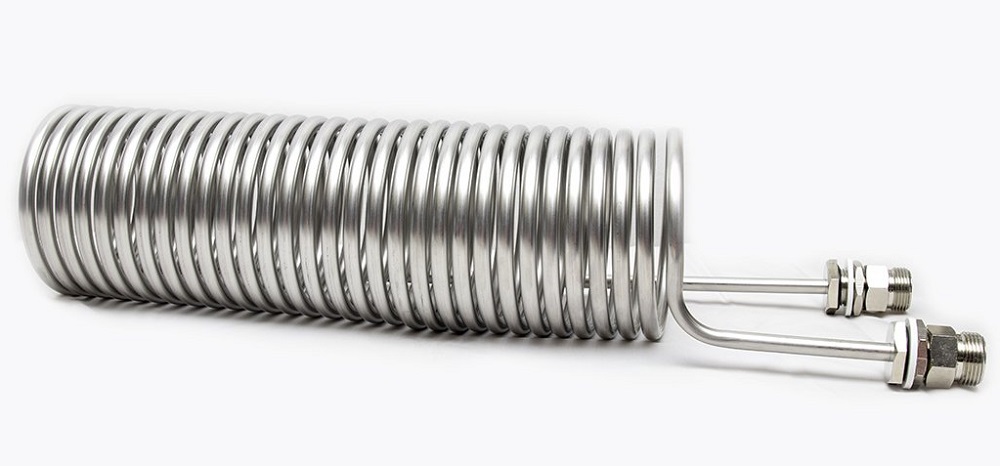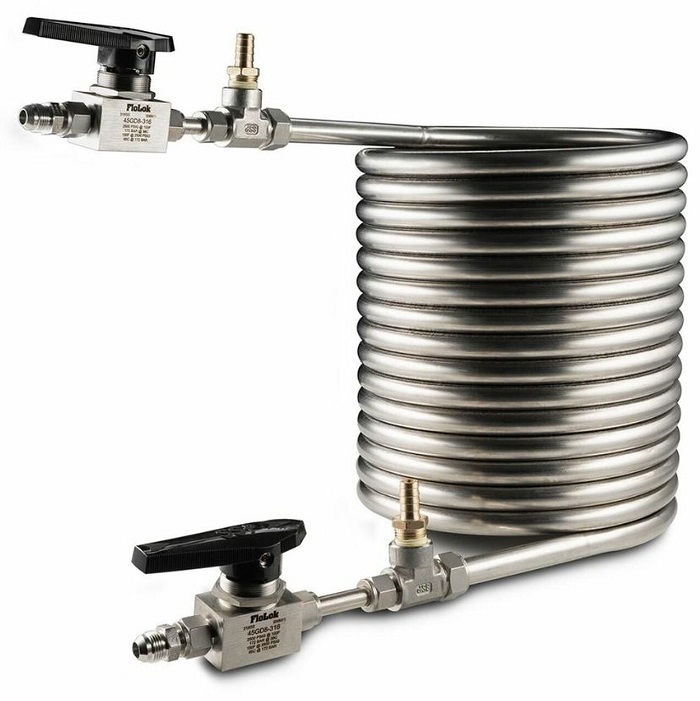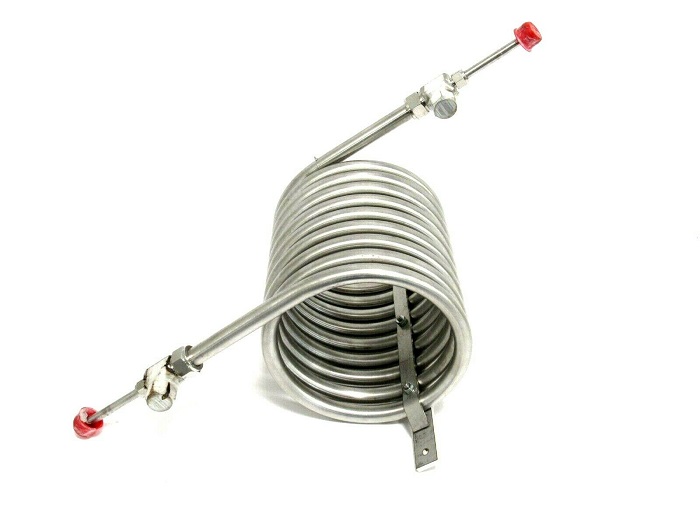Welcome to Linquip Blog. Today and in this article, we are going to deal with Coil Heat Exchangers. The information in this article gives a significant collection of data you need to know about the structure, working principle, applications, and privileges of Coil Heat Exchangers. A coil heat exchanger is a type of heat exchanger, a device used to transfer or exchange heat or thermal energy with the help of coils.
Our team gathered all of the necessary information on this topic to eliminate the need for reading diverse content on other websites. Stay with us until the end to find the answer to your question on this topic.
An Introduction to Coil Heat Exchangers
Coil heat exchangers in their simplest form, use one or more tubes that run back and forth several times. The tube separates the two fluids. One fluid flows inside the tube and another flows on the outside. Let us have a look at a heating example. Heat is transferred from the hot inner fluid to the tube wall via convection, it then conducts through the pipe wall to the other side and the outer fluid carries this away also through convection.
The Coil Type of Heat Exchanger produced by metal industries is suitable to transfer heat in a wide variety of operating conditions and to refuse to accept decay for the longest period possible under the harshest operating circumstances. Coil-type exchangers are more efficient than shell and tube exchangers for low flow rates. Due to their simple construction, they are low in price and easy to clean on the shell side. Thermal efficiency approximates that of a true countercurrent flow type exchanger.
Condensers are used for condensation vapors cooling liquids. Condensers are made by fusing a number of parallel coils in a glass shell. Coil Type Heat Exchangers are artificial to special requirements as to dimensional tolerances, finish, and tempers for use in condensers and heat exchangers.
Copper heat exchanger tubes are normally supplied in straight length in annealed half-hard temper. Coil Type Heat Exchangers shaped by metal industries not only have stiff tolerances the most dependable dimensions throughout the tube length. The tube surface is clean both inside. Coils are made in different diameters using tubes with different bores.
How Does a Coil Heat Exchanger Work?
The Applications of Coil Heat Exchangers
When it comes to heat exchangers, coil heat exchangers specifically are ideal for applications including boiler air preheating, pulp dryers, unit heaters, condensing and cooling as well as high-pressure, air tempering, and dryer applications. Depending on the application, there are many types and styles of coil heat exchangers to choose from.
Some of these include stainless tube bundles, double-pip heat exchangers, stainless steel tube immersion coil, bare tube immersion coolers, gas to water coolers, copper coil heat exchangers, combination ambient air/chiller water coolers, or coil tube-in-shell designs to name a few. Each of these may also come in a variety of sizes and each has specific advantages. However, coil heat exchangers, in general, can be expected to have many advantages overall as well.
The Advantages of Coil Heat Exchanger?
Some advantages of coil heat exchangers include high efficiency, flexibility, and low-pressure drop, they require little maintenance, are compact and lightweight, and are also easy and inexpensive to install. Coil heat exchangers tend to have higher efficiency than other types because of the large number of closely aligned tubes. This design aspect enlarges the heat transfer area, which results in a higher heat transfer coefficient overall.
This efficiency equates to higher production while using less energy and that means big savings both upfront and in the long run. The coil-type heat exchanger is also known for being compact and lightweight due again to the closely packed tubes. The exchangers’ compact, lightweight design as well as their unique vertical orientation also means that they will take up less space and will be easier and less expensive to install. Their lightweight and compactness also lend to the flexibility mentioned earlier.
Another advantage of these heat exchangers is that there are many options when it comes to model types and configurations, which means they can be used with a wide variety of temperatures, flows, and pressures.
This flexibility equates to greater value overall. In addition to the benefits I just mentioned, coil heat exchangers also have low-pressure drops and require little maintenance as the structure of the tubes allows for turbulent fluid flow, which minimizes fouling and scale build-up. They can also be easily removed from the piping system to be flushed if that is necessary. Saving time and money both on installation and maintenance can go a long way for your business, and allows for overall smoother operations and less hassle and frustration.
Conclusion
The present article was an attempt to deal with Coil Heat Exchangers and deliver all the essential information about how they work and where they are used. A coil heat exchanger is a type of heat exchanger, a device used to transfer or exchange heat or thermal energy with the help of coils.
If you have any experience using Coil Heat Exchangers, we will be very glad to have your opinions about their performance in the comments on our website Linquip. Moreover, if you have any questions about this topic, you can sign up on our website and wait for our experts to answer your questions. Hope you enjoyed reading this article.
Buy Equipment or Ask for a Service
By using Linquip RFQ Service, you can expect to receive quotations from various suppliers across multiple industries and regions.
Click Here to Request a Quotation From Suppliers and Service Providers
Read More on Linquip






